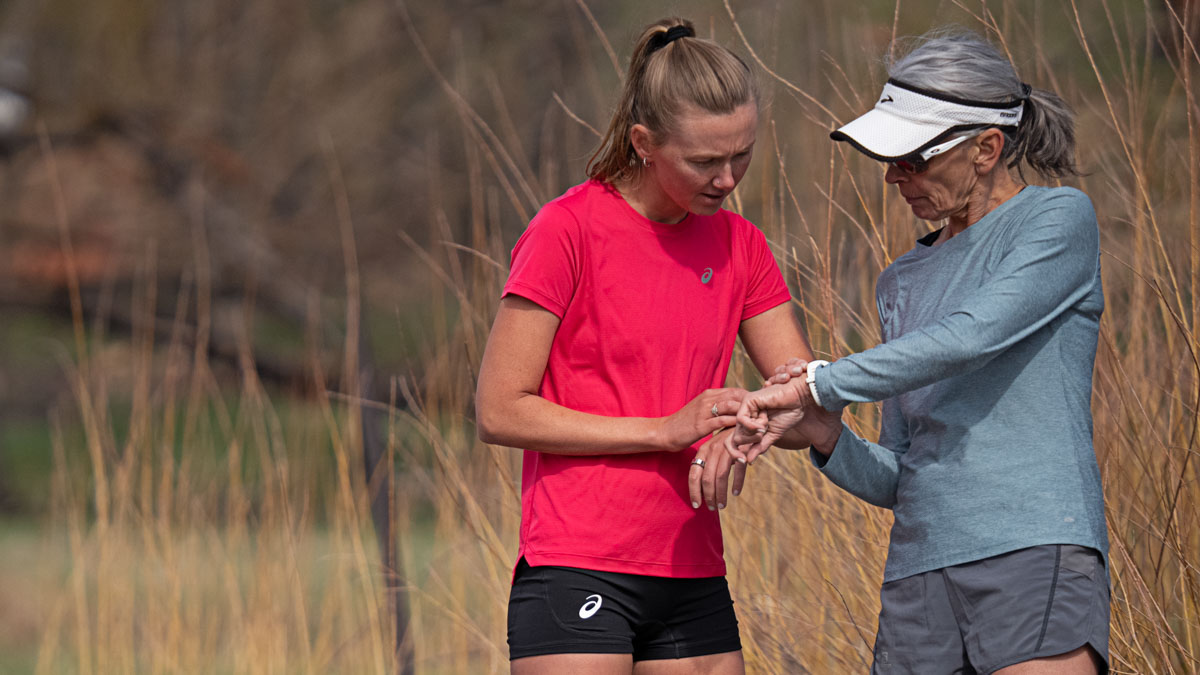Strength training offers countless benefits, such as building muscle, boosting bone density, and adding variety to workouts. And with TrainingPeaks’ new Strength Builder, it’s now easier than ever to plan and track strength training sessions for your athletes.
However, making sure athletes train at the right intensity remains a challenge. Velocity-based strength training (VBT) provides an effective, adaptive solution to make the most of strength training.
The Drawbacks of 1RM Testing
Many coaches use the one-rep max (1RM) method to prescribe strength training. This involves athletes gradually increasing weight while reducing reps, ultimately lifting the heaviest weight they can with proper form. Coaches then use percentages of the 1RM to target specific adaptations throughout the program.
While useful, this approach has drawbacks. Testing for 1RM poses injury risks, especially if athletes sacrifice form or hesitate to push their limits. Testing also takes time, particularly for multiple exercises.
Even with accurate 1RM values, day-to-day variations in readiness can impact performance. A prescribed load might feel too light, leading to insufficient adaptations, or too heavy, causing excessive fatigue or injury.
Velocity-based strength training solves these problems by offering real-time feedback and flexibility.
What Is Velocity-Based Strength Training?
Velocity-based strength training (VBT) measures barbell speed to guide training intensity. By tracking lift velocity, coaches and athletes receive immediate, objective feedback. This method allows athletes to lift with purpose, target the right adaptations, and manage fatigue effectively.
VBT Terminology
If you’re curious about using VBT, you’ll want to familiarize yourself with a few key metrics:
- Mean Velocity (MV)
- Mean Propulsive Velocity (MPV)
- Peak Velocity (PV)
- Velocity Loss (VL)
These metrics help you determine appropriate weights and repetitions for each session. For example, a drop in velocity signals fatigue, prompting adjustments to weights or reps.
How to Use Velocity-Based Strength Training
You can implement VBT using velocity charts that link MPV to 1RM percentages for specific exercises. Depending on the training phase and goals, athletes aim for target velocities to set their initial weight. Velocity loss then determines when to adjust reps or load.
VBT allows a more personalized approach to strength training by creating individual load-velocity profiles and measuring velocities across incremental lifts. These profiles reveal each athlete’s strengths, such as power at high velocities or force production at low speeds. With this data, you can design programs that target weaknesses and maximize performance.

Available VBT Technology for Coaches & Athletes
Technology makes VBT easier by providing real-time feedback, motivating athletes, and fostering competition. Several tools can help you implement VBT:
- Linear Transducers: These devices attach a tether to the barbell to measure velocity. They deliver high accuracy and reliability best for vertical lifts. They aren’t the best for horizontal lifts, and they tend to be expensive.
- Accelerometers or Inertial Measurement Units (IMUs): These sensors attach to the barbell or the athlete and measure both vertical and horizontal velocity, making them an incredibly versatile training tool. Unlike linear transducers, they can measure horizontal velocity, but they aren’t as accurate as other forms of technology since they rely on algorithms to calculate distance and velocity.
- Smartphone Apps: Apps use a video-based approach to track barbell movement. They sometimes require user input after a set of lifts is completed to indicate when a repetition started and finished, meaning that feedback isn’t given in real-time. While affordable, they lack real-time feedback and vary in reliability and accuracy.
Given cost and portability, accelerometer/IMU or smartphone app options are better suited for work for endurance athletes. Accelerometers and IMUs would just edge out smartphone apps For those who struggle with space to set up their phone on a tripod, accelerometers and IMUs are a better option than smartphone apps. They also offer a bit more versatility sincerely they’re able to track velocities of non-barbell movements, too.
Is Velocity-Based Strength Training For You?
Velocity-based strength training offers numerous advantages. By using objective data, you can tailor workouts to each athlete’s needs, account for daily fluctuations in readiness, and reduce the risk of undertraining or overtraining. Real-time feedback also keeps athletes motivated and focused on lifting with intent.
If you decide to adopt VBT, choose technology that suits your needs. Consider reliability, accuracy, and cost when selecting devices or apps. Regardless of the tool, VBT enhances your ability to guide athletes toward peak performance.
References
Flanagan, E., & Jovanović, M. (2014, January). Researched Applications of Velocity Based Strength Training. Retrieved from https://www.researchgate.net/publication/265227430_Researched_Applications_of_Velocity_Based_Strength_Training









